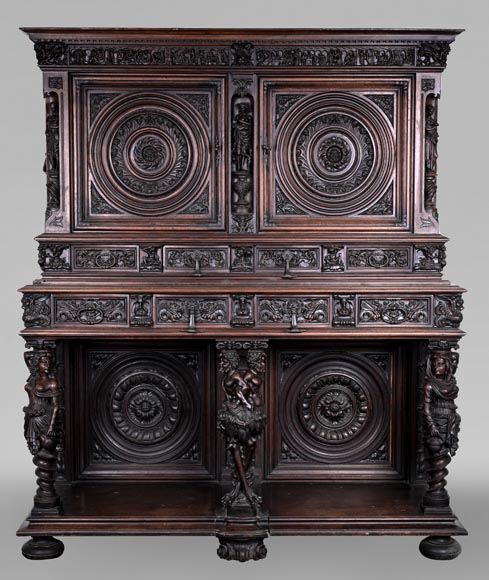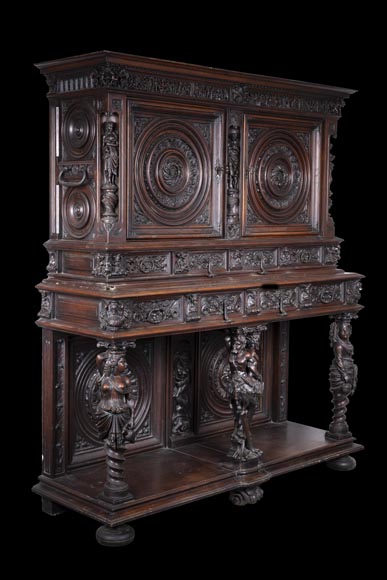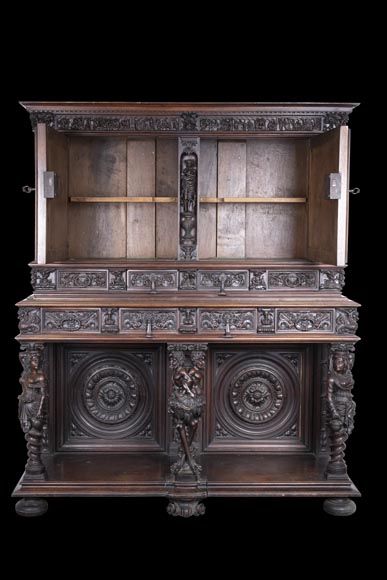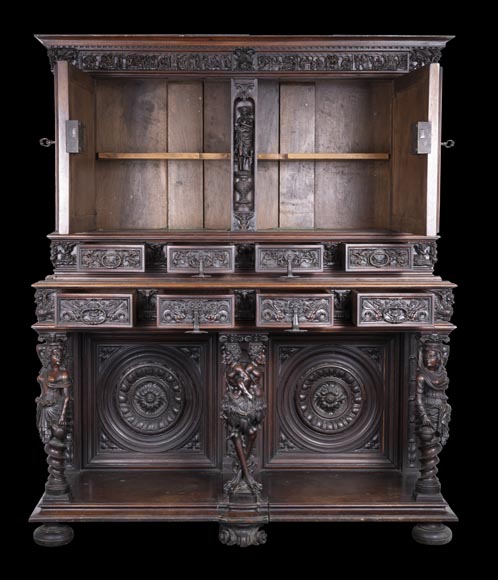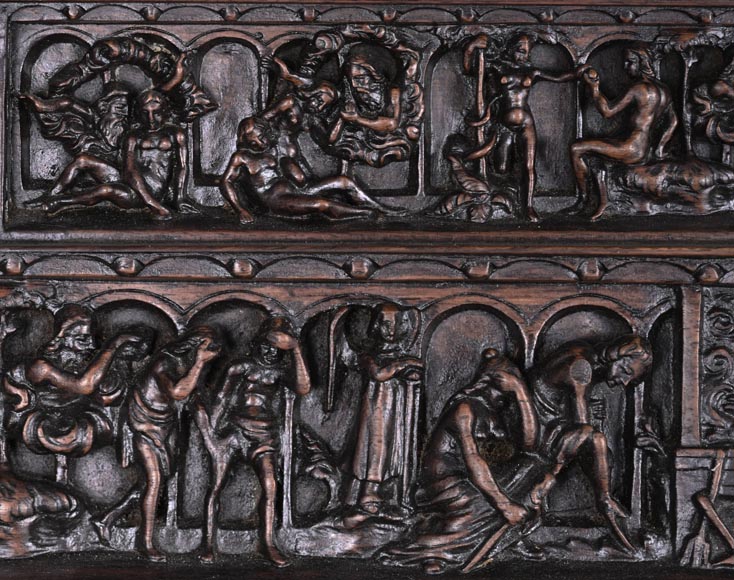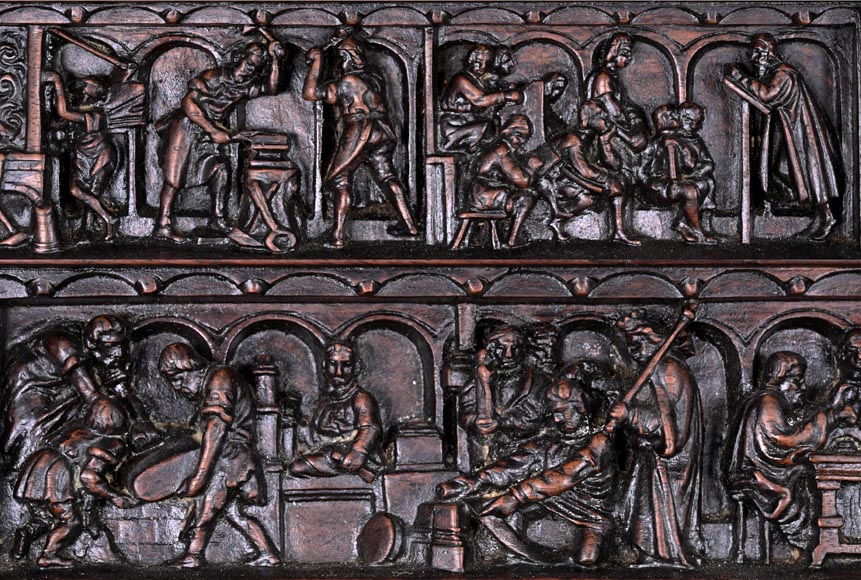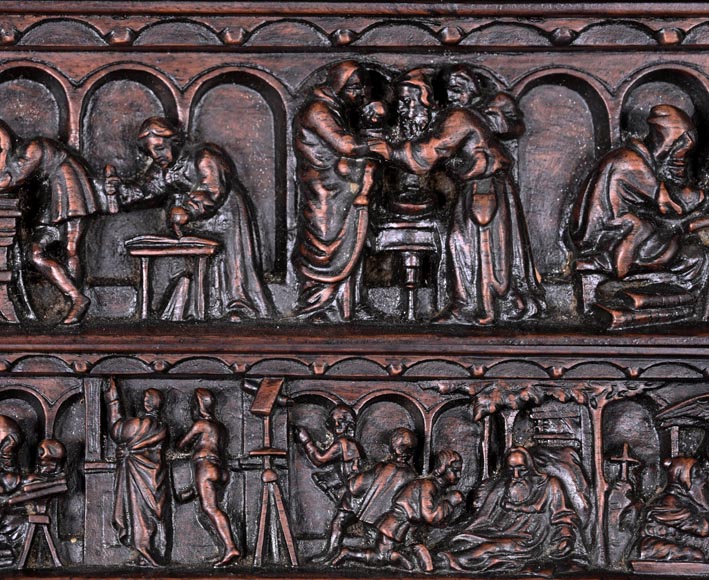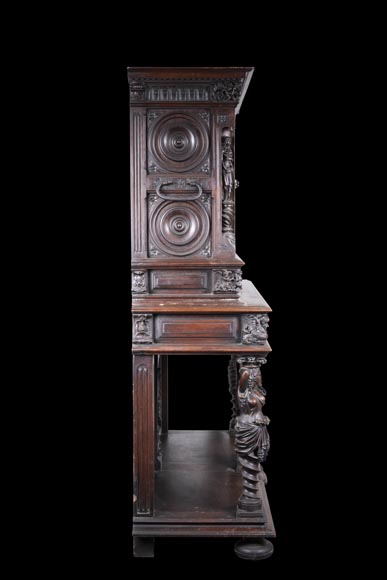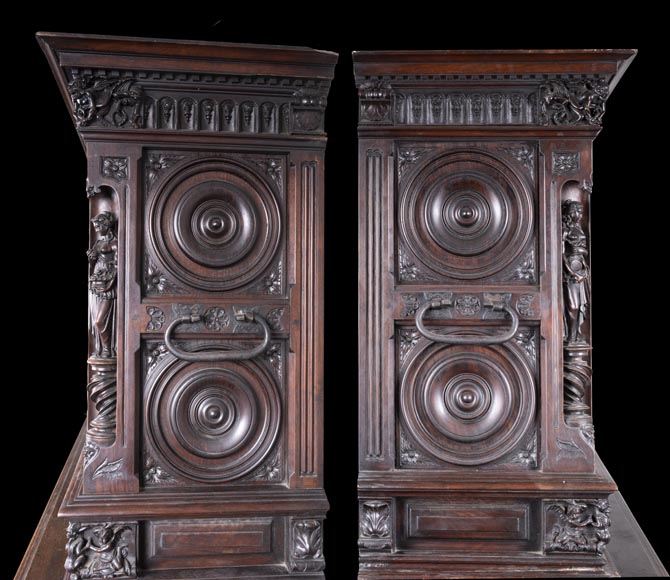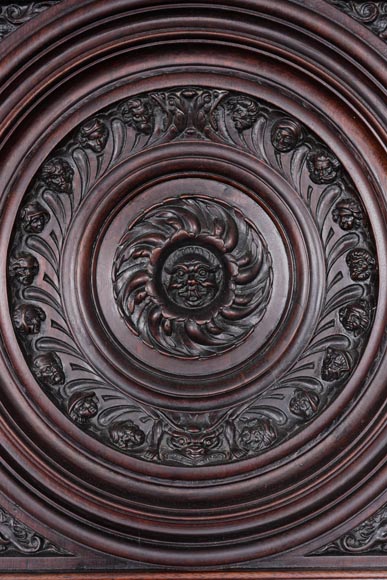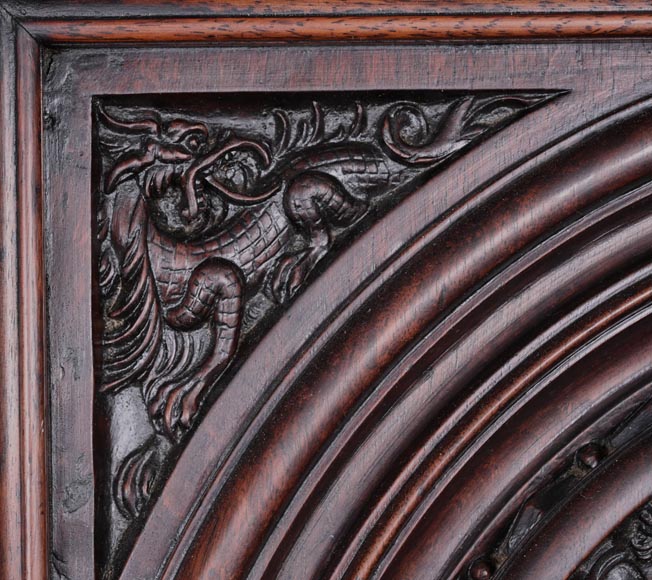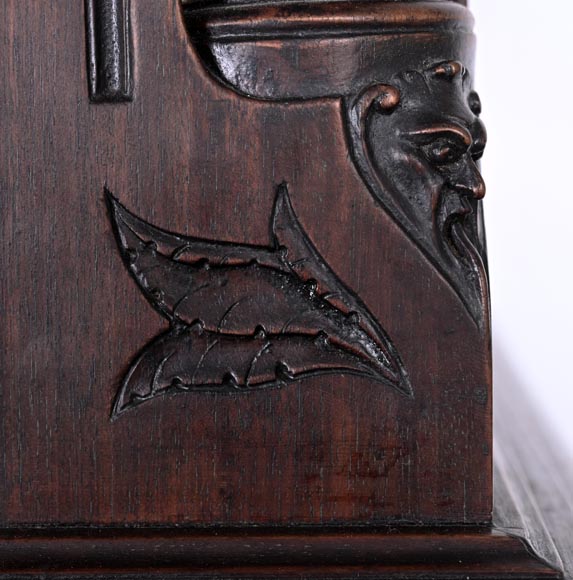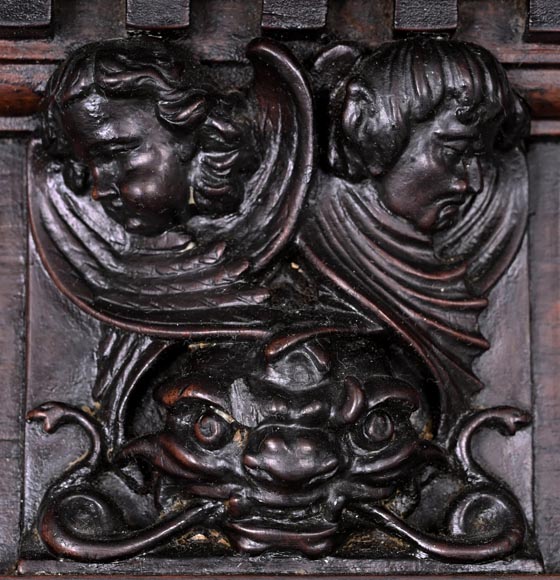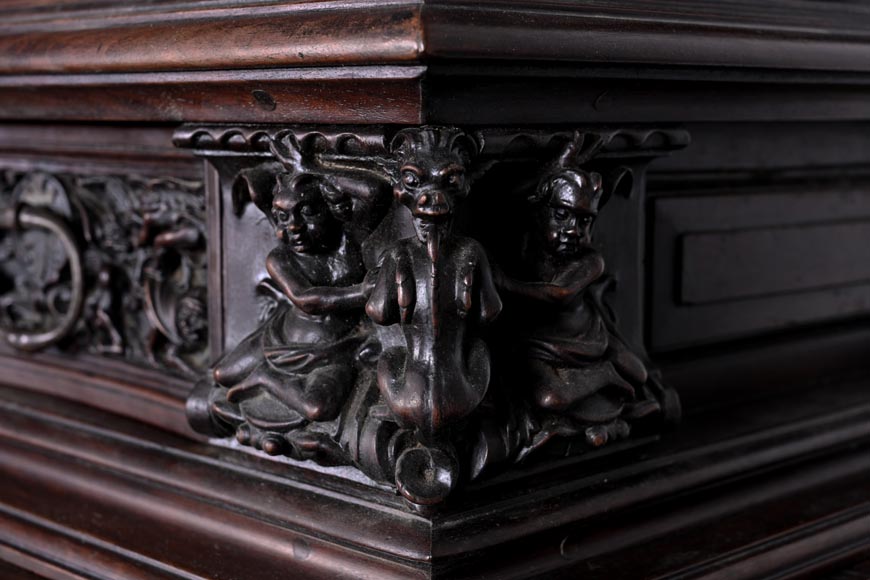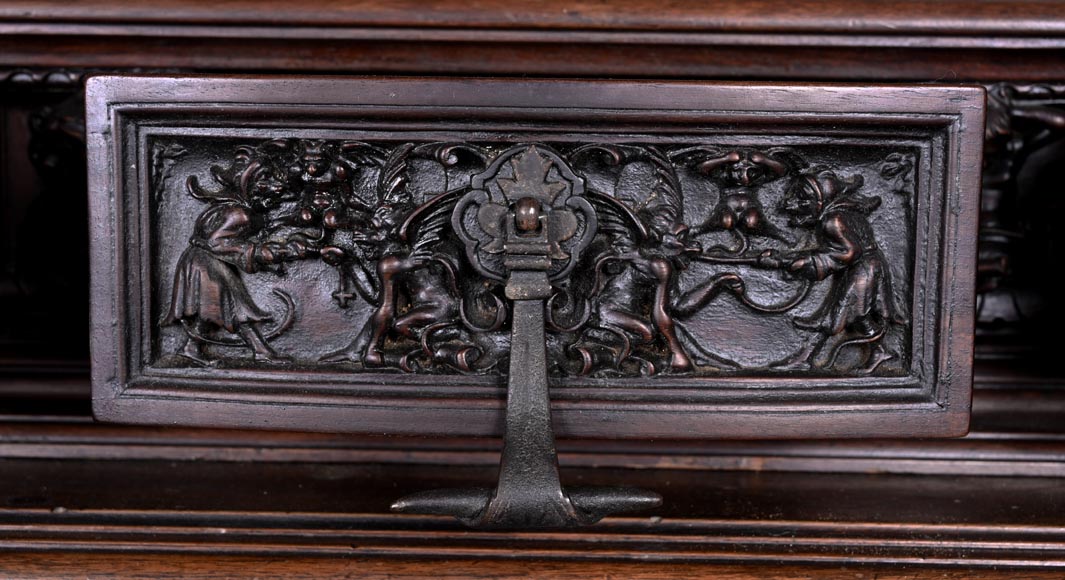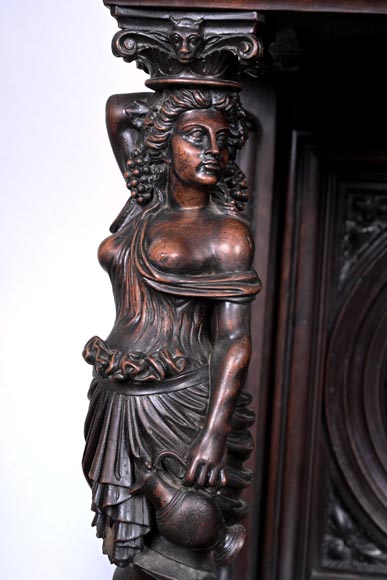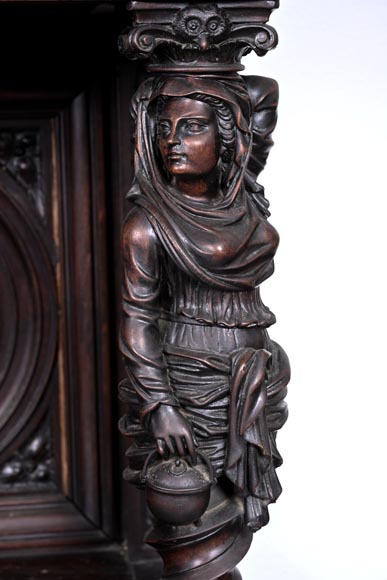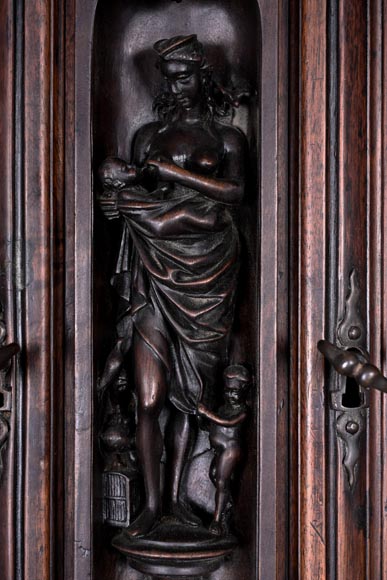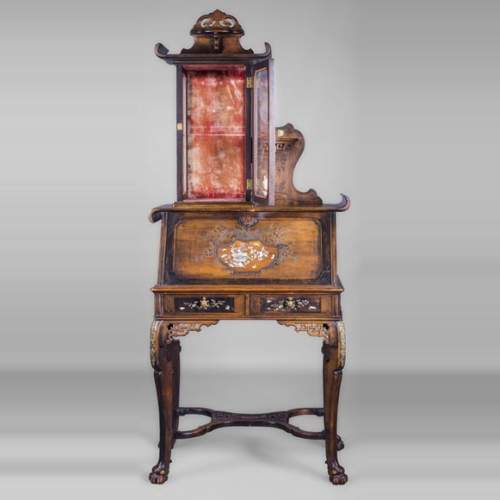Style Neo-gothic / Ref.15877
CHIMERIC DRESSOR
Dimensions
Width 63'' ⅜ 161cm
Height 74'' ¾ 190cm
Depth: 21'' ⅝ 55cm
This imposing walnut carved cupboard sideboard is a tour de force of artistic invention and technical mastery. Close to Tuscan Neo-Renaissance production of the second half of the 19th century, this exceptional piece brilliantly blends Renaissance vocabulary with diabolical iconography. Resting on five feet, the four-sided base develops a moulded plinth and features three tall anthropomorphic supports holding the main body. The back panel is adorned with low-relief rosettes. Two rows of four richly carved drawers are stacked. The second level, slightly recessed, serves as the base for the juxtaposed doors, separated by a female sculpture in a niche. The lateral uprights are also decorated: target motifs, iron handles, chimeras, and female corner figures. This fantastical sideboard is topped with a frieze representing scenes from the Old Testament. An antique-style cornice crowns the ensemble.
At the Sources of Historicism and the Neo-Renaissance Style
The decorative arts and architecture of 19th-century Europe are marked by an uninterrupted succession of historicist styles: Neo-Classical, Neo-Gothic, Neo-Romanesque, Neo-Renaissance, Neo-Byzantine… The deliberate use of models and forms borrowed from the past is one of the defining features of Historicism. Chimeras, scrolls, caryatids, and mascarons constitute the decorative repertoire of the Neo-Renaissance style, largely influenced in France by the rediscovery of the 16th-century Burgundian cabinetmaker Hugues Sambin. Appreciated by the public as early as the 1840s, the reign of Napoleon III marked the rise of this artistic movement. The 1867 Exposition Universelle celebrated the apogee of the style; on this occasion, Henri-Auguste Fourdinois produced his famous two-tier cabinet, now in the Musée des Arts Décoratifs in Paris (inv. 29921). In France, the designation “Henri II style” actually refers to a diverse production – just as in Italy, the *stile umbertino* expressed strong Renaissance influences.Informations
Price: on request
Recommended for you :
Dimensions:
Width: 78
Height: 186
Depth: 47
Dimensions:
Width: 159
Height: 251
Depth: 67
Dimensions:
Width: 84
Height: 66
Depth: 54
Dimensions:
Width: 132
Height: 74
Depth: 77
Dimensions:
Width: 79
Height: 157
Depth: 35
Dimensions:
Width: 83
Height: 179
Depth: 45
Dimensions:
Width: 100
Height: 173
Depth: 47
Dimensions:
Width: 71
Height: 167
Depth: 37
Dimensions:
Width: 131
Height: 145
Depth: 48
Dimensions:
Height: 228
Diameter: 88
Dimensions:
Width: 114
Height: 130
Depth: 49
Dimensions:
Width: 88
Height: 192
Depth: 46



